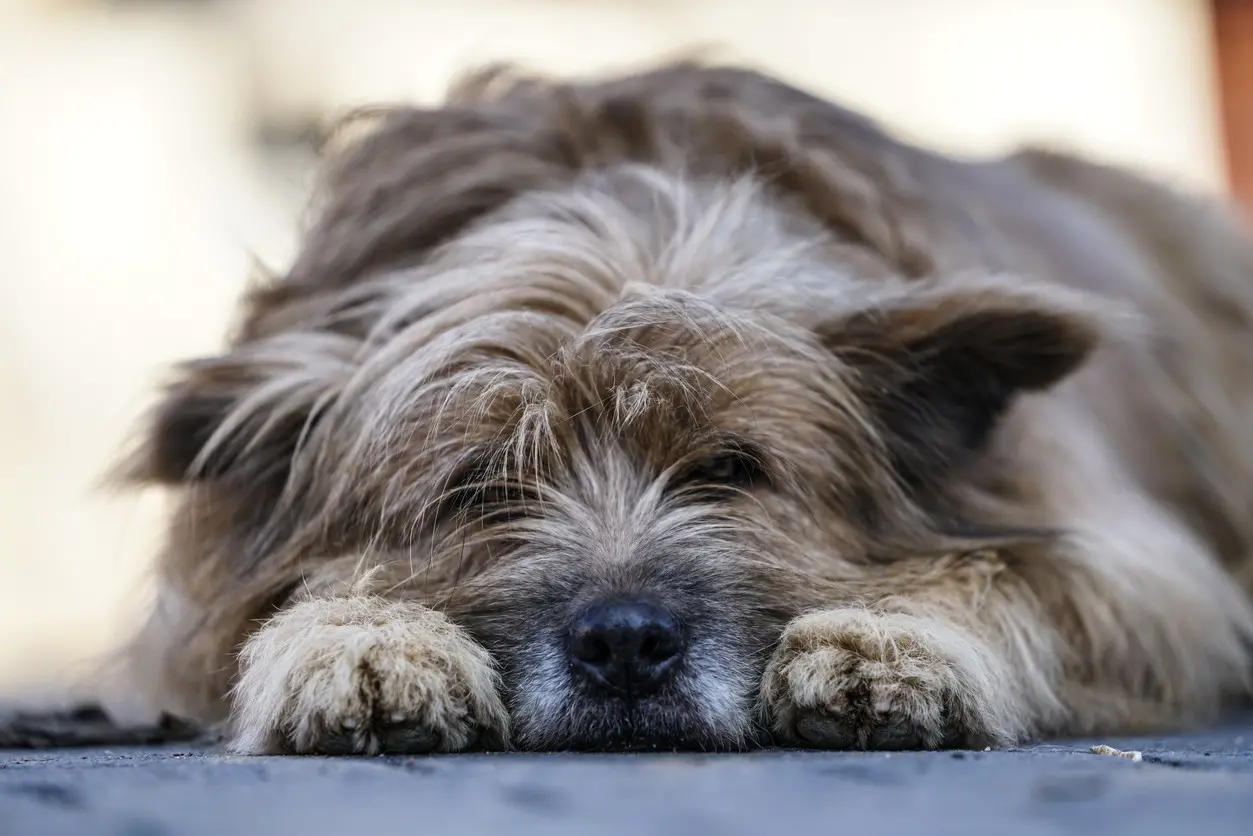Canine parvovirus (i.e., parvo) is a serious infection that spreads alarmingly through susceptible populations, especially young and unvaccinated dogs. Brief exposure, such as being in the wrong place at the wrong time, can cause your dog to quickly develop a life-threatening condition. Despite effective vaccines, parvo remains a common cause of death in young dogs, because the virus can lurk in the environment for months, waiting to attack unprotected pups.
By being able to recognize parvo’s signs, how the virus spreads, which canine populations the condition impacts most often, and how to prevent the disease, you can avoid a tragedy. Read our guide to learn how to protect your dog from parvovirus.
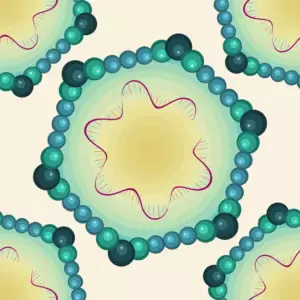
What is canine parvovirus?
Canine parvovirus is a dog-specific pathogen that attacks rapidly dividing cells in the intestines. An affected dog becomes sick quickly, and their impaired immune system cannot fight back. Without treatment, many infected puppies die from dehydration or blood infection (i.e., sepsis), but treatment boosts the survival rate.
How does canine parvovirus spread?
Parvo is so dangerous because the infection spreads quickly and easily among unvaccinated dogs, without requiring direct contact. Parvovirus is resistant to many common disinfectants, can live indoors for at least two months, and can live outdoors for several years under the right conditions.
A dog can contract parvo by ingesting virus particles. These viruses then spread to their ultimate targets, the intestines and immune system. An infected dog begins exhibiting signs within a few days. Because an infected dog can spread the virus before they exhibit signs, the disease can spread quickly.
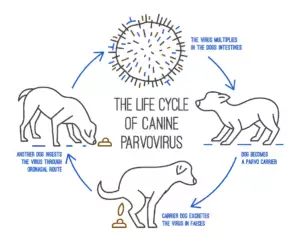
Which dogs are most susceptible to parvovirus?
Any unvaccinated dog is vulnerable to parvovirus, but young puppies seem most at risk because they have immature immune systems. A puppy is born with short-term immunity, which they acquire from their mother, but this protection wears off after a few weeks. Parvo’s window of opportunity opens between this time and before a puppy starts their vaccine series at around 6 to 8 weeks of age. An unvaccinated dog or one who does not complete their vaccination series is most susceptible to contracting parvo until they reach 6 months of age. Parvovirus is common in puppies born to stray mothers or in shelter environments.
What does parvovirus do to a dog’s body?
Parvovirus attacks a dog’s body – rapidly dividing cells, which include specific cell types in the intestines, lymph nodes, and bone marrow. Within 24 to 48 hours of first showing vague illness signs, most dogs develop a fever and bloody, watery, profuse diarrhea. They may also vomit, act lethargic, become dehydrated, and refuse to eat. Intestinal damage can cause resident bacterial populations to leak into the bloodstream, ultimately causing septic shock, organ failure, and death. Meanwhile, parvo attacks an infected dog’s immune system, depleting their white blood cells and leaving the infected pet defenseless.
How do veterinarians diagnose parvovirus?
A veterinarian may suspect and diagnose parvovirus based on a dog’s history, signs, age, and vaccination status. Rapid, in-clinic stool sample tests can identify the virus, confirming a veterinarian’s suspicions. Blood tests are ineffective in detecting the virus initially, but they are necessary to evaluate the pet’s overall condition. Often show decreased white blood cell counts.
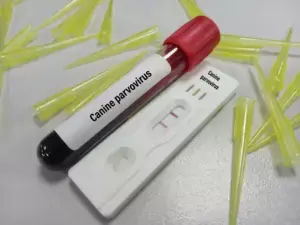
How do veterinarians treat parvovirus?
Veterinarian parvovirus treatment options depend on the infection’s severity and the owner’s finances. Hospitalization usually results in a 90% higher survival rate and requires dedicated isolation ward staff and around-the-clock care. Intensive outpatient care may be an option for less severely affected dogs. Outpatient care requires the pet’s owner to provide diligent care, bringing in their infected dog for daily clinic visits to receive fluids, injections, and tests. This care option usually results in a lower survival rate.n 80% survival rate.
Treatments cannot eliminate parvovirus from an infected pet’s body. Their goal is to reduce or prevent complications. Intravenous fluids, antibiotics, antinausea medications, gastrointestinal (GI) protectants, and supplemental nutrition are treatment mainstays. Treatment may also involve a plasma transfusion to boost the dog’s ability to fight the infection.
How can a pet owner prevent their dog from contracting parvovirus?
The key to parvovirus prevention is to ensure your puppy receives a complete three-to-four-dose vaccination series, starting when they are between 6 and 8 weeks of age with the last vaccine at 15-16 weeks old. Parvovirus vaccines are widely available through general practice veterinarians, low-cost vaccine clinics, and community outreach programs. Your dog should also receive a booster dose one year after completing their initial series, and every three years thereafter. A naturally infected dog develops long-term immunity but should still receive booster vaccines to ensure complete protection.
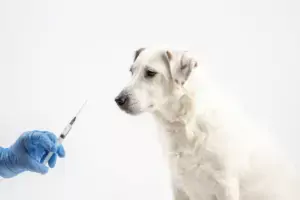
If your puppy is too young for parvo vaccination, you must carefully protect them from virus exposure. Allow only known, trusted, vaccinated pets around your unvaccinated puppy. Do not take them to pet stores, dog parks, playgroups, or anywhere other dogs may have frequented until one to two weeks after they have received their first vaccination. Two weeks after their last vaccination. However, since socialization is important during the puppy stage, your pet can interact with known, vaccinated dogs and puppies during the vaccination series.

If your pet exhibits benign GI signs, such as vomiting or diarrhea, bring them to your nearby UrgentVet location. However, if your pet is severely weak or debilitated or they have had a known parvo exposure, head straight to an emergency facility that offers intensive care unit (ICU) isolation 24 hours per day, seven days per week. Because parvo is highly contagious, always inform the care team of your dog’s vaccination status ahead of time and wait for instructions before entering the building.
Visit our website to find a location or check in online if your dog needs urgent care—because your pet can’t wait to feel better.

